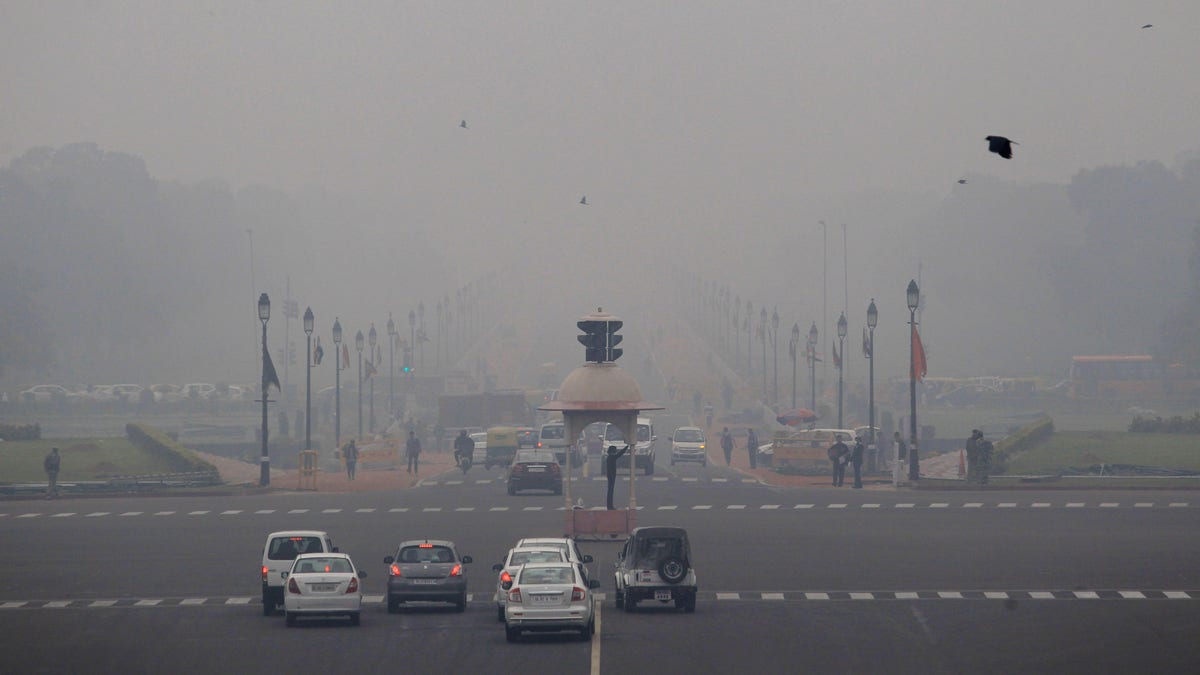
Smog and fog envelop the Rajpath, the ceremonial boulevard, behind, as a police man, center, controls traffic in the morning in New Delhi, India, Wednesday, Feb. 5, 2014. On bad days in India’s congested capital, the air is so murky it slows traffic to a crawl because visibility is so poor. Conversations are punctuated with rasping coughs. Weak bands of sunlight filter through a grainy sky. (AP Photo/Tsering Topgyal) (The Associated Press)
LONDON – Outdoor air pollution could cause 6 to 9 million premature deaths and represent an economic cost of around $2.6 trillion a year by 2060 unless action is taken, the Organisation for Economic Co-operation and Development (OECD) said in a report released on Thursday.
The OECD examined the economic consequences of air pollution and found that it could cost 1 percent of gross domestic product - or $2.6 trillion a year - by 2060.
The economic cost would rise with a surge in related annual healthcare bills to $176 billion from $21 billion in 2015 and with lost work days rising to 3.7 billion from 1.2 billion.
A reduction in crop yields as a result of dirty air would also weigh on most countries' economies, the report said.
"The number of lives cut short by air pollution is already terrible and the potential rise in the next few decades is terrifying," said OECD environment director Simon Upton.
"If this is not motivation enough to act, this report shows there will also be a heavy economic cost to not taking action."
Outdoor air pollution caused more than 3 million premature deaths in 2010 but that number could double or triple by 2060, the report showed.
The biggest rises in mortality rates from air pollution are forecast to be in India, China, Korea and central Asian countries such as Uzbekistan, where rising populations and congested cities expose more people to power plant emissions and traffic exhaust.
India had four of the 10 cities in the world with the worst air pollution, the World Health Organisation said last month.
Death rates are seen stabilizing in the United States and falling in much of Western Europe by 2060 partly due to efforts to move to cleaner energy and transport, the OECD said.
Leading sources of air pollution include vehicles, especially diesel-engined models, the heating and cooling of large buildings, waste management, agriculture and the use of coal and diesel in power generation.